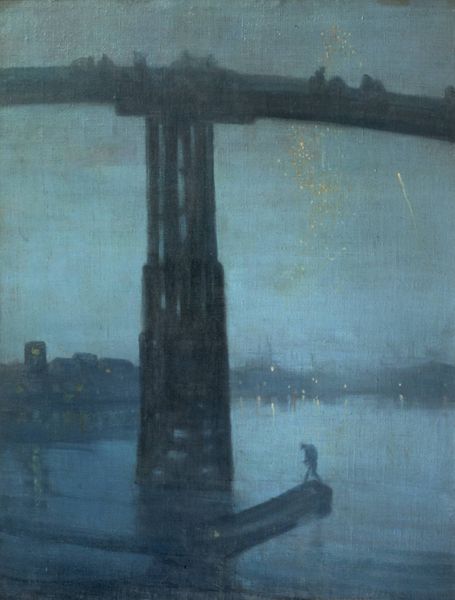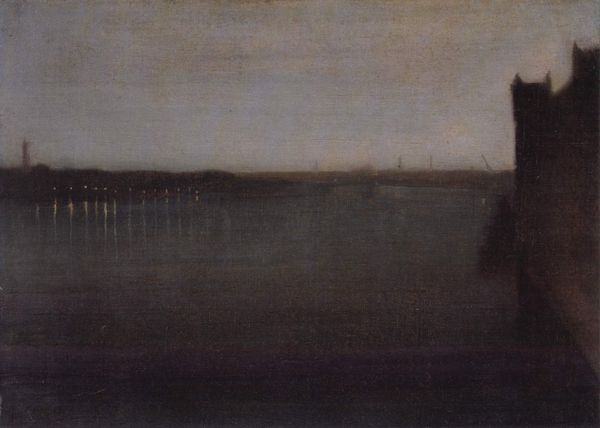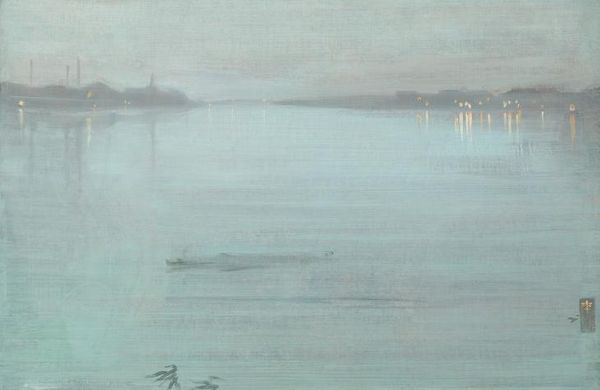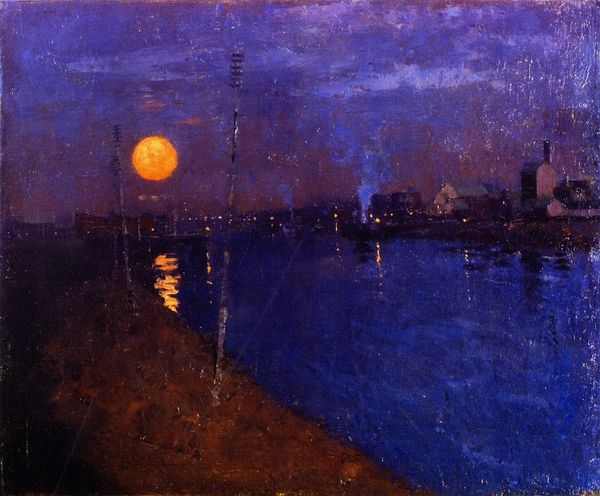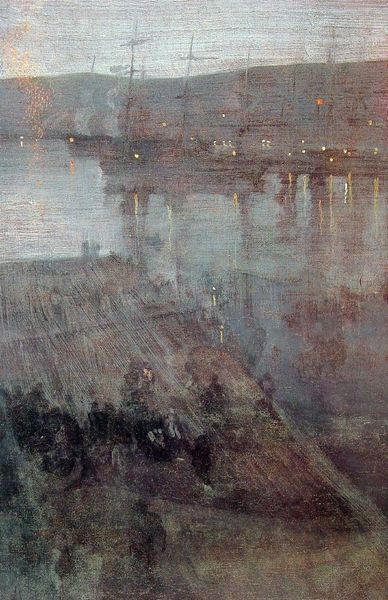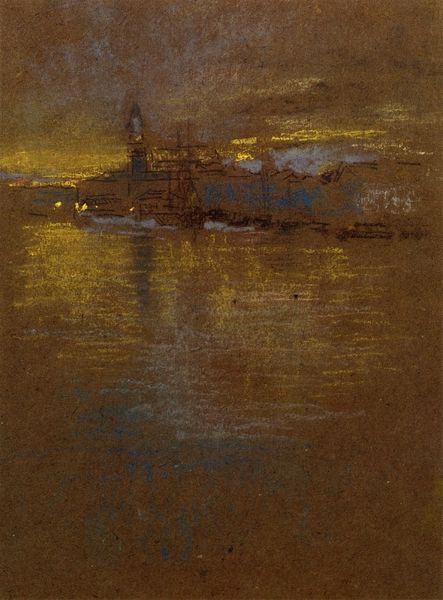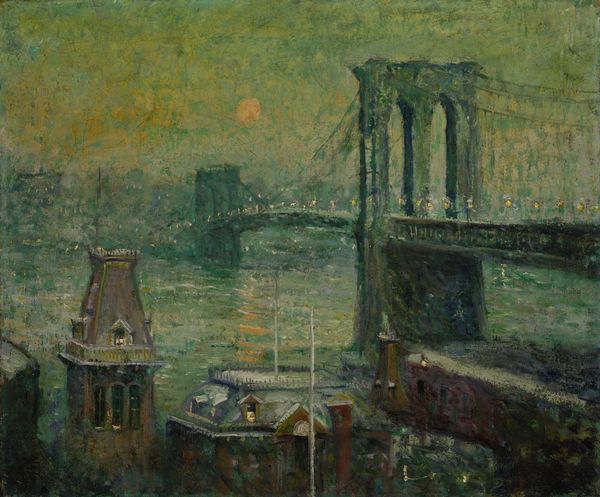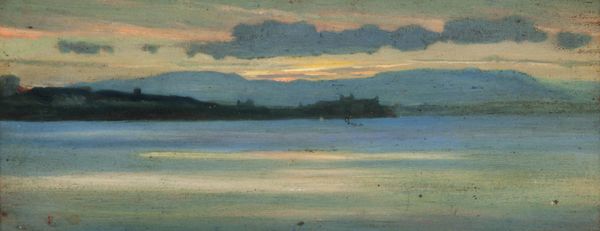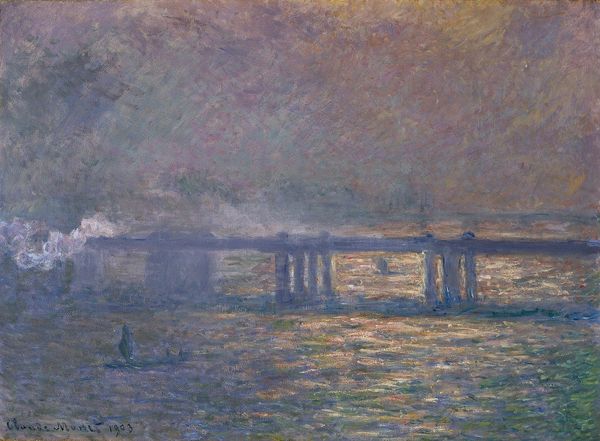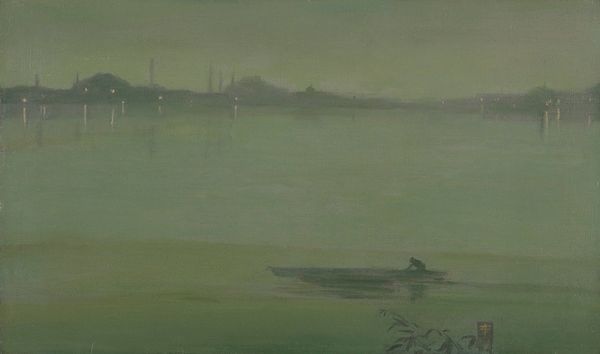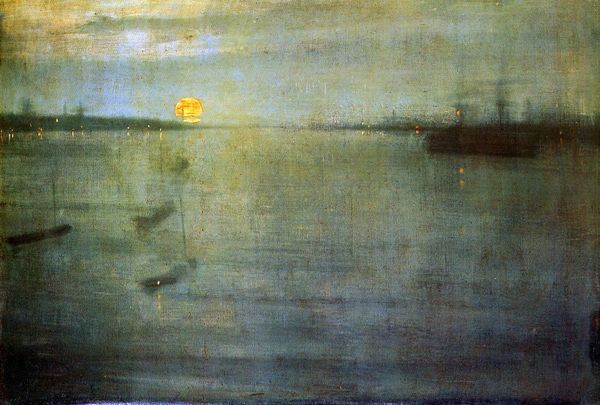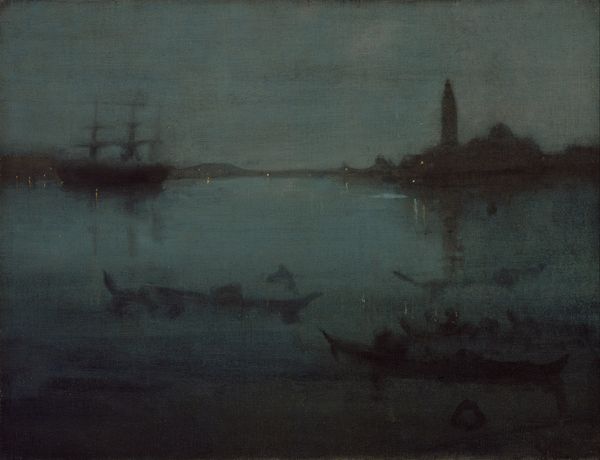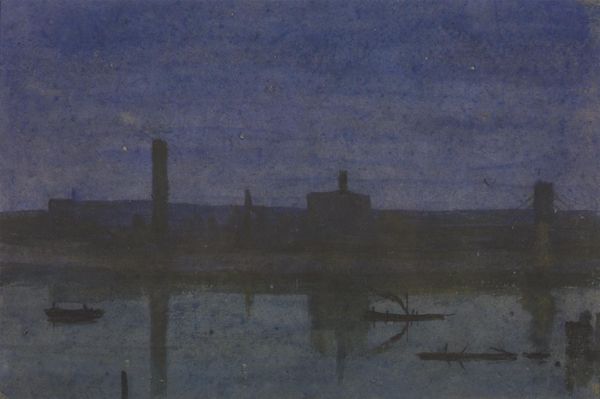
oil-paint
#
boat
#
impressionism
#
oil-paint
#
landscape
#
impressionist landscape
#
oil painting
#
orientalism
#
cityscape
Dimensions: 66.6 x 50.2 cm
Copyright: Public domain
Editor: Here we have Whistler’s “Nocturne: Blue and Gold – Old Battersea Bridge,” painted in 1875 using oil paint. It feels incredibly subdued, almost melancholic, but with these shimmering, delicate touches of gold. What do you make of it? Curator: Ah, yes, Whistler's nocturnes! They’re less about a literal depiction of a scene, and more about evoking a feeling, wouldn’t you say? Look how he captures the atmosphere of the city at night, the way the lights reflect in the water… It’s almost dreamlike, isn’t it? Notice, how does the lack of crisp details contribute to that atmosphere? Editor: It definitely does feel dreamlike, especially how soft everything is. And those little sparks of gold almost feel like fireflies, adding a bit of magic. Curator: Magic is the perfect word! Whistler was fascinated by Japanese art, and you can see that influence in the simplified forms and the emphasis on harmony and mood rather than detail. Think about haiku poems - distilling a whole world of feeling into a few short lines. He titled these works ‘Nocturnes’ to connect them to musical compositions, feeling that the painting’s worth came from its aesthetic harmony as much as from its representation. Don’t you agree? Editor: That connection to music makes sense! It does feel like he’s trying to create a mood more than paint a picture. I’d never really thought about the Japanese influence either, that adds a whole new layer. Curator: It's all about finding that harmony, isn't it? It invites the viewer to linger and fill in the gaps, to really feel the night. It certainly helps with seeing more beyond representation in painting. Editor: This piece has definitely changed how I see Impressionism and art’s ability to go beyond simply depicting reality!
Comments
No comments
Be the first to comment and join the conversation on the ultimate creative platform.
